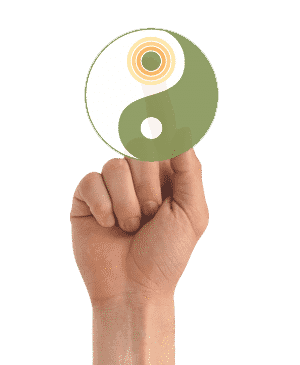The Lengths We Go To Avoid Cancer
Enjoying a sunny day can be a dangerous tightrope…
On one hand, we need sunshine for optimum physical and mental health…
But get too much of it, and the sun can kill you.
Skin cancer is the most common cancer worldwide. With Australia having the highest death rate, and New Zealand close behind… 1 in 5 Americans will develop skin cancer by the age of 70.
In the US alone, more than two people die of skin cancer… every hour.
Sunbathing can be deadlier than smoking… According to the (Australian) Cancer Council, 11,000 Australians were diagnosed with lung cancer in 2014 (85% of lung cancer cases are due to smoking). In the same year, 13,134 Australians were diagnosed with melanoma, (the deadliest form of skin cancer).
With statistics like these, one might be discouraged to soak up the sun altogether. But… our body needs the sun.

.
Sunshine Has Important Health Benefits
Our bodies produce vitamin D when exposed to sunlight. Vitamin D is needed to strengthen your immune system. Vitamin D also helps your body absorb calcium, which strengthens teeth and bones.
Sunshine increases the release of serotonin in the brain. This hormone is needed for elevating mood as well as feelings of calm and focus.
Sunlight reduces your blood pressure and cuts the risk of heart attack and stroke. The University of Edinburgh found that sunlight exposure releases a compound called Nitric Oxide that reduces blood pressure in the circulatory system.
The Best Way To Get A Healthy Dose Of Sun
To lessen the risk of sun damage, avoid peak hours of UV rays between, between 10 a.m. and 4 pm, when the sun’s rays are strongest.
After just 15 minutes in the sun, your vitamin D receptors are fully saturated. After that point, you won’t be able to make any more Vitamin D from the sun. That means it’s time to cover up!
Note: If you live in Australia or New Zealand, 15 minutes of unprotected sunshine may result in sunburn… so, it’s essential you avoid the sun’s peak hours.
Sunscreen blocks all the benefits of sunshine… the same goes for sunlight through a window.
The Scary Truth About Sunscreen
There are two kinds of lotion used to protect our skin from the sun’s harmful rays… sunscreen which is a chemical filter, and sunblock which is a physical blocker (more about sunblock later).
Sunscreen is designed to absorb into the skin. After application, your skin is protected because the chemicals in sunscreen absorb UV rays… before your skin does.
The problem with most sunscreens is that their chemical ingredients are quickly absorbed into the bloodstream where they can linger in the body for some time. Some of the more toxic ingredients include:
- Benzophene – Most sunscreens contain this chemical. A known endocrine disruptor. Some variations of benzophenone will suppress the effect of thyroid hormones. In fact, after applying sunscreen with benzophene, studies show that thyroid hormones T3 and T4 are lower than normal… for several days.
- Octyl-methoxycinnamate–Another common ingredient, octyl-methoxycinnamate is classed as a xenoestrogen. ‘Xeno’ meaning ‘foreign’ is a synthetic form of estrogen that is known for causing breast cancer in women and testicular cancer in men.
- Homosalate is a xenoestrogen that makes it easy for chemicals to absorb into the skin. Studies show that sunscreen and insect repellent are a bad mix. If applied along with sunscreen, bug repellent is also absorbed into the bloodstream.
- Oxybenzone—This ingredient filters out UV rays, but it is also an artificial estrogen (xenoestrogen). In addition to upsetting female hormone levels, oxybenzone also poses a dangerous risk to unborn children. Also, oxybenzone reacts with chlorine, producing a hazardous, toxic, by-product that can concentrate in swimming pools.
- Parabens – Another endocrine disrupting, xenoestrogen. Companies know that consumers try to avoid parabens… so they rename them with different labels. Look out for ingredients with the word ‘paraben’ on the end like: propylparaben, methylparaben, butylparaben, or isoparaben.
- Octinoxate is another xenoestrogen that affects thyroid function. This chemical is absorbed into the body and the bloodstream the fastest. It can also be detected in urine and breastmilk.
The FDA Doesn’t Know What Levels Of Absorption Can Be Considered Safe
An excerpt from the FDA website states:
“In a new study, we tested absorption of active ingredients contained in four commonly available sunscreen products (lotion, aerosol spray, nonaerosol spray, and pump spray).
This study evaluated absorption of the active ingredients avobenzone, oxybenzone, octocrylene, homosalate, octisalate, and octinoxate.
Results showed that all six active ingredients were absorbed into the body’s bloodstream – even after a single use.
An additional finding from this new study is that once absorbed, these active ingredients can remain in the body for extended periods of time.”
The FDA is seeking more information on sunscreen ingredients
In an attempt to bring over-the-counter sunscreens up to date with the latest scientific standards, the FDA has asked industry parties for additional safety data on 12 active sunscreen ingredients currently used in sunscreen products.
The FDA states they need additional data to fully understand their absorption into the body as well as the long-term effects. Without further testing, the FDA does not know what levels of absorption can be considered safe.
So, in a nutshell… instead of independent research, the FDA is asking the sunscreen industry to do the research for them… essentially, “hiring foxes to guard the chicken coop”.
The Devastating Effects On Marine Life
Studies suggest that sunscreen chemicals can harm coral reefs and other sea life.
In a 2016 study, a team of scientists found that a common chemical in many sunscreen lotions (Oxybenzone, or BP-3), is highly toxic to corals and other marine life.
The study reported increased coral bleaching; coral DNA damage; and abnormal coral growth (via endocrine disruption).
These chemicals have been found to affect sea life directly from swimmers wearing sunscreens.
But Some Websites Say That Toxic Chemicals In Sunscreen Are Unproven?
Industries that profit from sunscreen will agree that chemicals are absorbed into the bloodstream. But argue that it hasn’t been proven to have any adverse health effects.
When it comes to the chemicals found in sunscreen… It seems at best; scientists aren’t sure what the long-term health risks are.
But scientific reports from the US National Library of Medicine National Institutes of Health tell a different story…
https://www.ncbi.nlm.nih.gov/pmc/articles/PMC5615097/
Although some UV-related pathologies could be prevented by applying sunscreen, the efficiency and safety of these products is questionable.
Numerous studies raised concerns about sunscreens and endocrine and developmental impairments.
https://pubmed.ncbi.nlm.nih.gov/29086472/
The Center for Disease Control fourth national report on human exposure to environmental chemicals demonstrated that approximately 97% of the people tested had oxybenzone present in their urine.
Oxybenzone has been reported to produce contact and photocontact allergy reactions, implemented as a possible endocrine disruptor and has been linked to Hirschsprung’s disease.
https://www.ncbi.nlm.nih.gov/pmc/articles/PMC7648445/
There is growing evidence suggesting that exposure to environmental chemicals, such as phthalates, bisphenol A and multiple endocrine disrupting chemicals (EDCs), could have adverse consequences on kidney function and might contribute to cumulative kidney injury.
Sunblock Is A Much Safer Option For Long Term Use
Instead of being absorbed into the skin and into the bloodstream, sunblock remains on the surface of the skin, and reflects the sun rays.
Sunblock is made with either zinc oxide or titanium dioxide… or a combination of both.
Which is better… zinc oxide, or titanium dioxide?
Zinc Oxide is considered a more effective sunblock… it offers better UVA and UVB protection. But either is safe and effective.
Zinc Oxide is the only sun protection ingredient that’s been FDA tested and approved for use on babies under 6 months of age and children… which illustrates a high degree of safety.
Downsides to sunblock…
Since sunblock isn’t absorbed into the skin, it normally leaves a light white film on the skin and can be cumbersome to achieve a thin, translucent, even coating.
Would You Drink A Shot Glass Full Of Questionable Chemicals?
Then why rub them into your skin?
If you’re an avid sunscreen user, you might want to consider a non-toxic sunscreen alternative.
With demand for non-toxic sunblock, it’s getting easier to find it online and on shelves.
But if you’re not satisfied with your options, be sure to try this natural homemade sunblock recipe…
How To Make Your Own Natural Sunblock
Homemade sunblock with aloe vera and coconut oil
Ingredients
- 2 (or more) tablespoons of zinc oxide powder
- 1/4 cup coconut oil (which has an SPF of 7)
- 20 drops of wheat germ oil (SPF 20)
- 1/4 cup pure aloe vera gel (must be 50 percent or higher pure aloe)
- 1 cup (or less) shea butter (to make the lotion spread on the skin better)
Instructions
- Combine all ingredients, (except the zinc and aloe vera), in a saucepan. Mix the shea butter and oils at medium heat.
- Let the mixture cool before stirring in aloe vera gel.
- Cool completely before adding zinc oxide. Stir well to ensure the zinc oxide is evenly mixed.
Store in a glass jar, and keep in a cool, dry place until you’re ready to use.
Aloe vera is a great ingredient for homemade sunscreen. It’s been proven to both treat and prevent burns on your skin.
Note: You’ll need to reapply after swimming or after heavy sweating.
Homemade sunblock spray
Mix all the ingredients as described above, without the shea butter.
When cooled completely, you can add some more aloe vera gel and a carrier oil such as coconut oil. Slowly add the carrier oil until the mixture is a sprayable consistency. For best results, store in a glass spray bottle and keep refrigerated.
.
Bottom line – You must respect the sun… like it or not, the best protection is hats, umbrellas, and protective clothing.
But given the choice between toxic sunscreen and no sun protection at all, it would be wise to use whatever sunscreen is at hand.






